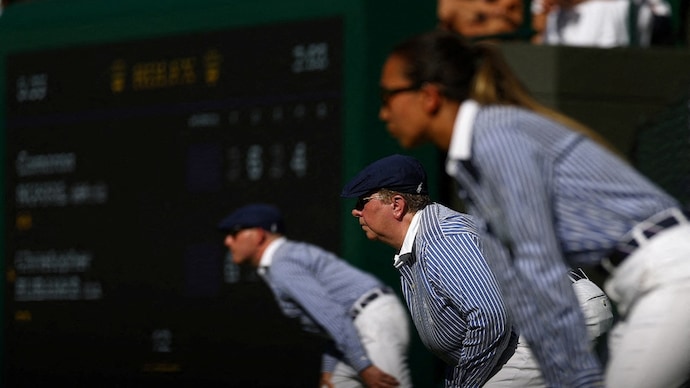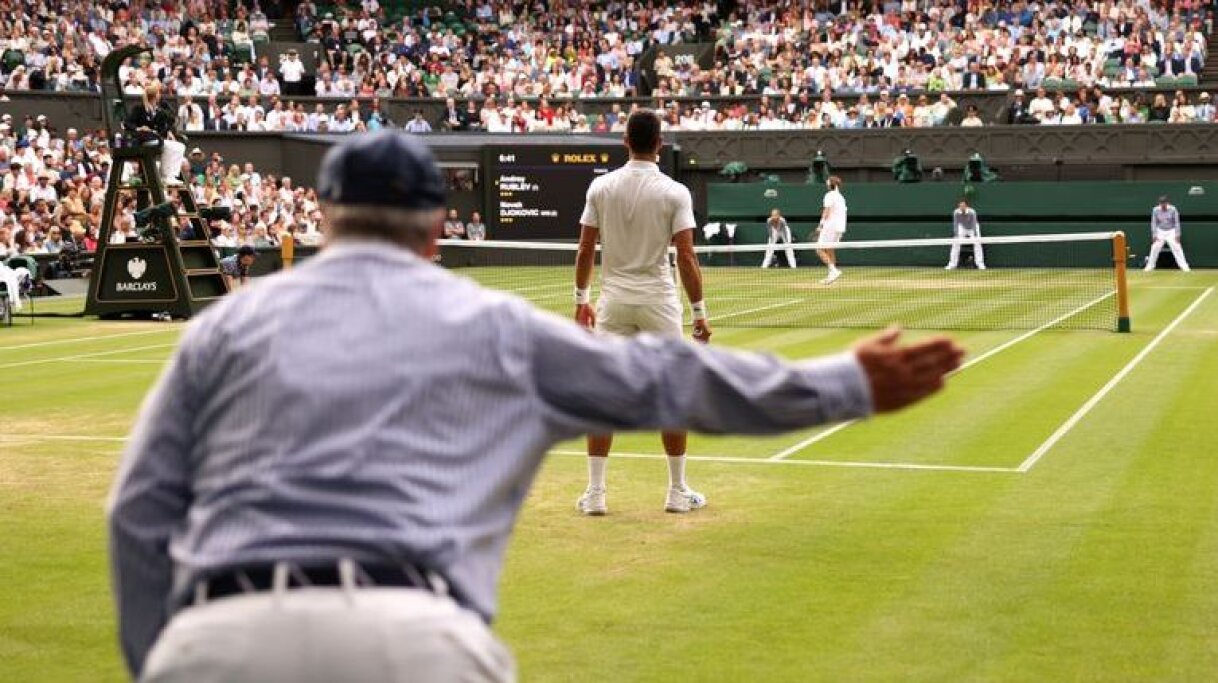Wimbledon to Replace Line Judges with Electronic System from 2025
Wimbledon, one of the most esteemed tennis tournaments in the world, is set to make a historic change from 2025 by replacing human line judges with a live electronic line-calling (ELC) system. This will be the first time in the tournament’s 147-year history that no human line judges will be present on any court during the championships. The decision reflects a substantial change in the world of tennis, as other tournaments have already moved in the direction of technology-driven presiding.

The End of an Era
For generations, line judges have been an important part of Wimbledon and tennis in general. Their role in calling shots in or out has been essential, but it has also led to moments of controversy, particularly when close calls affected significant points. Starting from 2025, this tradition will be left behind as machines take over the responsibility of line calls.
Wimbledon tested the ELC technology at this year’s tournament and was satisfied with its precision and performance. Sally Bolton, the chief executive of the All England Club, stated that after a cautious consideration and a thorough review of the results, the club felt it was the right time to introduce the system. She highlighted that it would make sure the maximum precision for officiating, providing the players with conditions they are already familiar to at other major tournaments.
A Global Trend in Tennis
Wimbledon is not the first major tournament to adopt an electronic line-calling system. The Australian Open, one of tennis’s four Grand Slam events, became the first to do away with line judges entirely. The US Open followed suit in 2022. In fact, the ATP, the organization that runs the men’s professional tennis tour, has announced that from 2025, all ATP Tour events will use ELC on every court.
The only Grand Slam that has yet to make this shift is the French Open, where line judges are still used. Nevertheless, it’s likely that they too may follow the trend in the near future, as tennis moves towards more automated officiating.
The Technology Behind It
The system used for electronic line-calling is known as Hawk-Eye, a technology that has been part of tennis since 2007. Initially, it was used as a review system, allowing players to challenge line calls made by judges. The electronic system then provided the final decision. Over time, players and fans have become familiar to this technology, as it has proven to be more precise and less prone to human error. With ELC, there will be no need for challenges because the technology will be responsible for making the calls in real-time, without human interference.
Players have generally adapted well to the new system, as it speeds up decision-making and reduces the number of disputed calls during matches. This shift towards technology has been hastened since the COVID-19 pandemic, which saw several tournaments adopt ELC to minimize on-court personnel.
Concerns and Impact on Officiating
In spite of the advantages of technology, there are some concerns about the removal of line judges from the courts. For many tennis fans and players, line judges added a human element to the sport, creating dramatic moments during close matches. The interaction between players and officials, whether positive or negative, has often contributed to the atmosphere and intensity of the game. Some may miss the human presence on the court and the suspense that came with players challenging calls.
Another concern is the impact on tennis officiating as a profession. Around 300 line judges are typically employed at Wimbledon each year, and their removal means a significant reduction in opportunities for these officials. The role of a line judge has often served as a stepping stone for aspiring chair umpires. Without this experience, it could be harder for new officials to progress in their careers.
The Lawn Tennis Association (LTA) has acknowledged these concerns, stating that it is working with the Association of British Tennis Officials to address the potential impact on officials’ careers. The LTA is planning to develop strategies to retain and recruit officials while supporting the officiating community through these changes.
Other Changes at Wimbledon
In addition to the switch to electronic line-calling, Wimbledon has announced another significant change to its schedule. From 2025 onwards, the start times for the men’s and women’s singles finals on the tournament’s final weekend will be pushed from 2pm to 4pm. This change is aimed at improving the viewing experience for audiences in North and South America, where time zone differences have made it challenging for viewers to watch the finals live.
Overall, while Wimbledon’s decision to adopt electronic line-calling marks the end of a long-standing tradition, it also signals the tournament’s commitment to accepting technological advancements for the sake of accuracy and fairness. As tennis continues to evolve, so too must its officiating systems, making sure that the sport remains at the forefront of innovation while preserving its rich history.
Cover Credits - Sky Sports


.png)


Leave a Reply